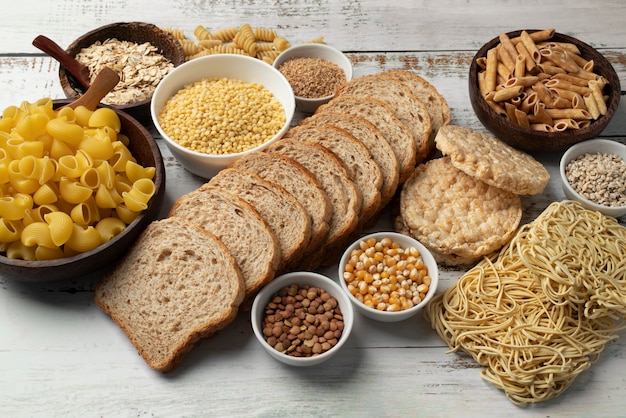Joint pain affects millions of people worldwide, often limiting mobility and reducing quality of life. While exercise and medical treatments play a role, nutrition is a powerful yet underutilized tool for maintaining joint integrity. One of the most effective nutritional strategies? Macro tracking — not just for weight loss, but for targeted joint protection.
By understanding and adjusting your intake of proteins, fats, and carbohydrates, you can reduce inflammation, support cartilage repair, and improve joint lubrication. This article breaks down seven practical, science-supported ways macro tracking helps protect your joints — with clear guidance on what to do, why it works, and how to adapt your diet for long-term joint health.
Protein isn’t just for building muscle — it’s essential for maintaining the structural components of your joints. Collagen, a key protein in cartilage, tendons, and ligaments, requires adequate amino acid supply to regenerate.
Tracking your protein intake ensures you’re consuming enough (typically 1.2–2.0g per kg of body weight) from high-quality sources like lean meats, fish, eggs, dairy, or plant-based alternatives like lentils and tofu.
Why it works: Studies show that consistent protein intake supports collagen synthesis and reduces age-related joint degeneration. Pairing protein with vitamin C-rich foods (like bell peppers or citrus) can further enhance collagen production.

Not all fats are created equal. Omega-3 fatty acids — particularly EPA and DHA found in fatty fish — are potent anti-inflammatory agents that can reduce joint stiffness and swelling, especially in conditions like osteoarthritis and rheumatoid arthritis.
Macro tracking helps you monitor fat quality, not just quantity. Aim for at least two servings of fatty fish per week (like salmon or mackerel), or supplement with algae-based omega-3s if plant-based.
Why it works: Omega-3s inhibit inflammatory pathways in the body, lowering levels of cytokines and enzymes that degrade cartilage. Tracking ensures consistent intake, which is key for long-term benefits.
While omega-6 fats are essential, excessive intake — common in processed and fried foods — can promote inflammation when not balanced with omega-3s. The ideal ratio is between 1:1 and 4:1 (omega-6 to omega-3), but modern diets often exceed 15:1.
Macro tracking allows you to identify hidden sources of omega-6 (like soybean or corn oil) and replace them with healthier fats like olive oil or avocado.
Why it works: Restoring balance reduces the production of pro-inflammatory eicosanoids, easing joint discomfort over time.
Refined carbohydrates (white bread, sugary snacks) spike blood sugar, leading to advanced glycation end-products (AGEs) that damage collagen and stiffen joint tissues.
Tracking carbs helps you shift toward complex, fiber-rich sources like vegetables, legumes, and whole grains, which stabilize blood sugar and reduce oxidative stress.
Why it works: Lower glycemic load correlates with reduced inflammatory markers and slower progression of joint degeneration.

Every pound of body weight exerts up to four pounds of pressure on the knees. Excess weight accelerates wear and tear on weight-bearing joints.
Macro tracking supports gradual, sustainable weight loss by creating a slight calorie deficit while preserving muscle mass through adequate protein.
Why it works: Even a 5–10% reduction in body weight can significantly improve joint function and reduce pain in individuals with osteoarthritis.
Emerging research links gut microbiota to joint inflammation. A diet rich in prebiotic fibers (found in onions, garlic, bananas, and oats) feeds beneficial gut bacteria, which in turn produce anti-inflammatory short-chain fatty acids.
Tracking your carb macros helps ensure you’re getting enough fiber (25–38g/day) without overconsuming refined sugars.
Why it works: A healthy gut barrier prevents 'leaky gut,' which can trigger systemic inflammation affecting the joints.
Macro tracking isn’t a one-size-fits-all solution. Individual needs vary based on age, activity level, and existing joint conditions.
Use your tracking data to experiment: increase protein if recovery is slow, reduce carbs if inflammation flares, or adjust fats for better joint lubrication. Pair tracking with symptom journaling for personalized insights.
Why it works: Personalized nutrition leads to better adherence and more effective outcomes than generic dietary advice.
Protecting your joints isn’t just about avoiding injury — it’s about fueling your body with the right balance of macronutrients. Macro tracking offers clarity, accountability, and adaptability, turning abstract health goals into actionable daily habits.
Start by focusing on protein quality, fat balance, and smart carbohydrate choices. Over time, these small, consistent changes can lead to stronger, more resilient joints — and a more active, pain-free life.

Wellness

Wellness

Wellness

Wellness

Health

Fitness

Wellness

Fitness

Health

Fitness

Fitness

Fitness

Health

Fitness

Health

Health